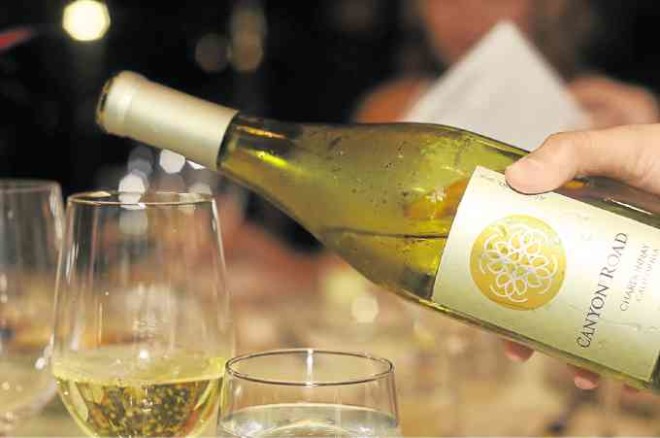
Wine appreciation can be intimidating. But, as master of wine Nicholas Paris said, one just needs to enjoy wine to appreciate it.
“You only need to talk like me if you want to study wine the way I did. Otherwise, if you love it, I don’t see any reason you should learn its complex vocabulary other than the basics,” said Paris, director of global sourcing, E&J Gallo Winery, distributed in the Philippines by Emperador Distillers Inc.
Paris, reputedly one of 200 masters of wine in the world, was recently in Manila on the invitation of Emperador Distillers to introduce six featured wines during the E&J Gallo Wine and Dine, a five-course dinner.
What are the basics?
“Appearance, nose, tasting,” he said. “Higher clarity means higher acidity. The deeper the color means it was aged in oak or is an older wine; lighter can also mean it was grown in a cooler climate.”
He added: “The greater the tears—the legs of the wine you see after you swirl your glass— means a higher alcohol content.”
As for the nose (smell), that’s all subjective—whether one can detect apricots or chocolates or plums. There is no right or wrong when it comes to the nose, Paris pointed out.
For the wine pairing, appetizer terrine of pork knuckles and foie gras, green apples and truffle dressing was matched with Canyon Road Chardonnay 2013.
The medium-bodied wine, with its beautiful ripe apple tropical characteristics and buttery notes, paired well with the rich pork knuckles and foie gras.
“Chardonnay is the No. 1 selling white grape in the US. They’re from cooler parts of the country. It’s the wine that is equally rich, like chardonnay, with the right acidity that cuts through the fat and cleanses the palate,” he said.
However, it was the aromatic Starborough Sauvignon Blanc 2013 that stole the show.
Paired with scallop and uni bavarois, cauliflower squid ink puree, edamame and herring caviar bouillabaisse whipped with hazelnut sauce, the citrusy characteristics of sauvignon blanc refreshed the palate for the next course.
“Sauvignon Blanc is the most popular white wine varietal. New Zealand produces them French-style. It is fresh, and
pairs well with light cheeses, seafood, salad or anything that is slightly herbal,” Paris said.
The second entree, slow-braised lamb shoulder with lemon confit and almond, tomato rissoni and dry fruit, was remarkable with the medium-bodied, Red Rock Merlot 2013, with its subtle oak and vanilla nose.
“It is soft and fruity, and goes well with the meat its citrusy complements,” he said.
For the main course, the Carnivor Cabernet Sauvignon 2013, with its full-bodied rich blend with hints of caramel, coffee and toasted oak, was excellent with the heavy US beef short rib, sauce bordelaise, duck liver and mushroom flan.
Capping the evening was its signature dessert wine, Barefoot Moscato, that went well with the mille-feuilles, pomelos creme legere and suha confit.
“I think many Filipinos appreciate the sweetness of dessert wine. It has a very accessible taste, no pretensions. Just something deliciously sweet and aromatic to pair with the dessert,” Paris said.